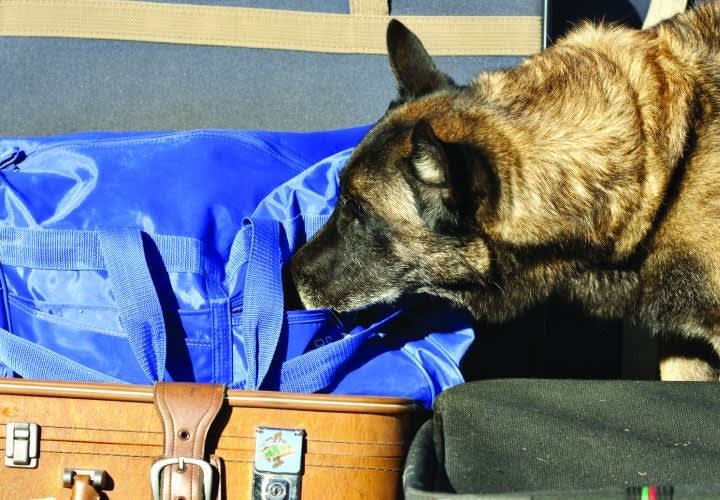The "Search" Issue
Assuming the lawfulness of a detention(stop is based on a reasonable suspicion of criminal activity), merely running the K-9 around the vehicle or container does not constitute a Fourth Amendment "search," and need not be independently justified. Even while invalidating the Indianapolis drug checkpoint in the Edmond case based on the illegal seizure, the court noted that the K-9 sniff was not itself a search: "The fact that officers walk a narcotics detection dog around the exterior of each car does not transform the seizure into a search." (Indianapolis v. Edmond)
In U.S. v. Place, DEA agents at a New York airport, acting on information from officials at the Miami airport, seized Raymond Place's luggage and held it for 90 minutes before a K-9 was brought to sniff it. After the dog alerted, agents opened the luggage and discovered a large quantity of cocaine. The Supreme Court suppressed the cocaine as evidence because it held that the 90-minute detention of the luggage was too long, but the court noted that the dog sniff did not constitute a search:
"The sniff discloses only the presence or absence of narcotics, a contraband item. Therefore, we conclude that the particular course of investigation that the agents intended to pursue here-exposure of respondent's luggage, which was located in a public place, to a trained canine-did not constitute a 'search' within the meaning of the Fourth Amendment" (U.S. v. Place).
In Illinois v. Caballes, a state trooper stopped a car for speeding. During the time it would normally take to issue a traffic warning or citation, another officer arrived with a K-9, ran it around the car, and searched the trunk after the dog alerted there. Driver Caballes moved to suppress the marijuana found in his trunk, but the Supreme Court denied the motion. Since in this case the seizure of the suspect was justified by the traffic violation, and since a K-9 sniff is not a search, there were no grounds for suppression.













